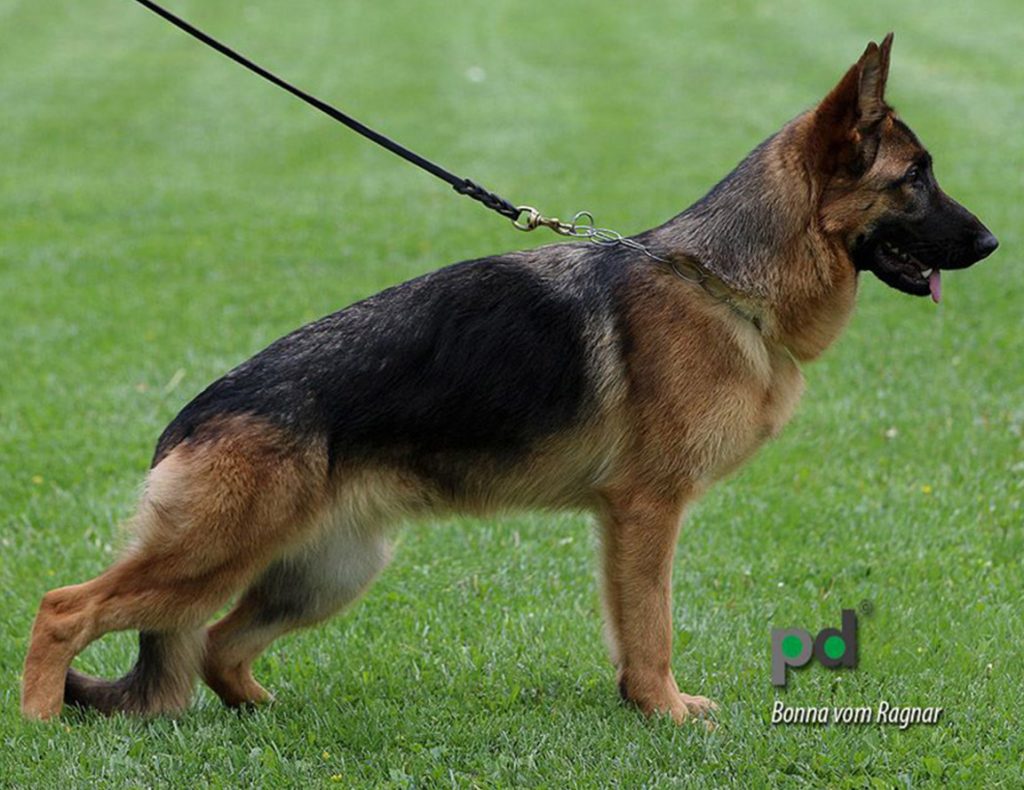

There are a lot of reasons why German Shepherd Dogs (GSD) are one of the most sought-after breeds in the world. One of the primary reasons is because of their versatility. There are few canine breeds that are capable of producing award-winning show dogs AND highly trained working dogs.
This distinction is often misunderstood by the breed’s most ardent fans. As a result, many GSD owners can become frustrated when their Shepherd fails to fulfill their expectations. That is why it is important to understand the difference between show line and working line German Shepherds.
What You Need To Know About Working Line German Shepherds
The German Shepherd’s origin story had nothing to do with dog shows or cosmetic appeal. Originally bred in the waning years of the 19th century, the German Shepherd breed was the product of Max von Stephanitz’s obsession with creating a line of dogs that were intelligent and strong enough to perform physically demanding, and even dangerous, jobs while maintaining a loving and loyal nature for their masters. In this singular goal, von Stephanitz was completely successful as the countless generations of German Shepherd working dogs can attest.
Stephanitz established the strict guidelines for the breed in 1899 with the progenitor of the breed and started the Verein fur Deutsche Schaferhunde (Society for the German Shepherd Dog). In the 120 years since the advent of the German Shepherd breed, there have been three distinct versions of the working line breed.:
- The West German Working Line: When you think German Shepherd, this is the version of the breed that typically comes to mind. A healthy temperament for owners of all ages, this type of working GSD excels on the job and at home with the family.
- The East German/DDR Working Line: This breed was developed during World War II and is the version of the breed used mostly by the military due to their athletic bodies and unmatched work ethic.
- TheCzech Working Line: An offshoot of the DDR line, this version of the breed comes from a single breeding kennel and can are typically used in both military and police work.
There have been many societies and clubs formed over the years that have built onto and established the following ‘working dog’ standards for the breed:
- Physical Attributes: Working Dog German Shepherds have stamina and agility that defies their size. While they lack the cosmetic attributes of the show dog line, they more than make up for it with their endless energy and powerfully lithe bodies bred to tirelessly put in a long day’s work.
- Fearless Instincts: Working line GSDs are equipped with an unflappable approach to their work. Whatever situation they find themselves in, a trained working line GSD will tackle it with an intelligence and confidence rarely found in any other canine breed.
- Unmatched temperament: Owners of working line GSDs are treated to a dog with unequalled loyalty and exceptional energy to perform the tasks they are trained to accomplish. You won’t find a smarter dog capable of being trained at the highest levels.
If you’re looking for a GSD that will impress in the show ring, you’re going to be disappointed. However, if you’re looking for a working dog that is fiercely loyal and unequalled in private security, police work, and even high-level military use, you’ve just found your new best friend.
All You Need To Know About Show Line German Shepherds
The show line German Shepherd were bred as a reaction to GSD owners who did not have the time, experience, or patience to properly train and utilize a working line GSD. As a result, dog breeders in Europe worked on creating a family-friendly and physically appealing version of the breed we now call ‘show line German Shepherds’; also known as “High Lines” or “Sieger Lines”.
The German Shepherd Club of German (SV) has long been the standard-bearer of both working line and show line GSDs. A few of the show line GSD characteristics are:
- Physical Characteristics: Much larger in body and broader in the head with powerfully angled hindquarters
- An energy level that is lower than the working class GSDs
- A longer and thicker coat than those found on working line GSDs
- A very loyal and friendly temperament for owners of all ages, especially when expertly trained.
- Typical coloring is what most people expect in a GSD with the classic ‘black saddle’ with black and tan or red and black coat colors.
There are two versions of show line GSDs that are universally recognized as the standards for the breed:
- American/Canadian Show Line: This breed has a narrow face and it’s hindquarters are extremely angular. This version of the breed is very agile and extremely obedient after proper training. It should be note that this version of the breed can often have hip problems, especially in the animal’s later years.
- West German Show Line: Bred almost exclusively for showing, this version typically has a slight angle to their hindquarters, especially when compared to the American/Canadian version and they typically have a slight “roached” back.
So, as you can see, there are many things to consider when planning to bring a German Shepherd into your home. Knowing the difference between the show line and working line of the breed is extremely helpful to picking the right dog for your needs. For even more detailed information and expert assistance in picking the right GSD for you and your family, simply contact the German Shepherd experts at Vom Ragnar German Shepherds® at 773-552-0808 . We are more than happy to answer all of your questions and put our expertise to work for you in your search for your new German Shepherd.
